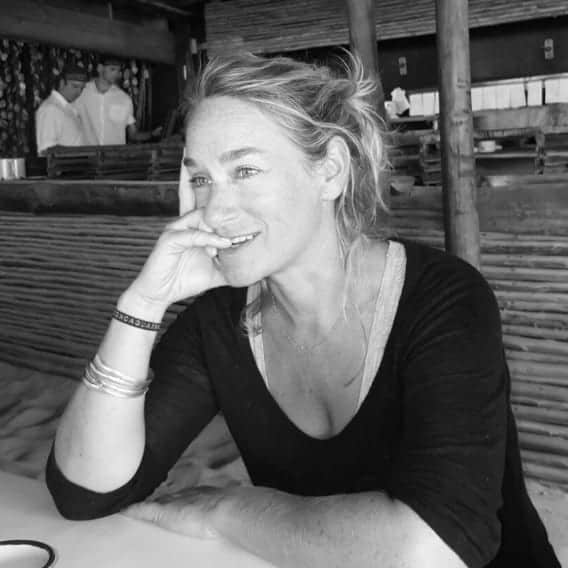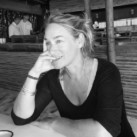
Jill Purce is a pioneering British voice teacher, sound healer and Family Constellations therapist whose work has profoundly shaped the international sound healing movement. Known for reviving and teaching the ancient practice of overtone chanting, she has explored the spiritual dimensions of the voice as a tool for healing, meditation and transformation. Jill has also developed innovative practices for resolving ancestral trauma through her unique blend of chant, ritual and Family Constellations. A respected author and lecturer, she continues to guide individuals and groups around the world in reconnecting with the power of sound, ceremony, and ancestral wisdom. MysticMag features an exclusive interview.
Your work emphasizes the therapeutic use of voice. Could you elaborate on how vocal practices can bring areas of hurt and pain into the light of clarity and illumination?
Scientists now describe almost every aspect of the physical world as resonant. Other traditions have always known this- almost everything resonates.
The medieval philosopher Boethius spoke of three kinds of music: musica mundana, musica humana, and musica instrumentalis. By musica mundana, he meant what we now understand as Cosmology and astronomy. By Musica humana he meant what we now call psychology. And musica instrumentalis is human music, created specifically to harmonize our psyches with the world around us.
I see this as one of the most important roles of music—to harmonize our psyche or soul with the greater cosmos. This attunement is essential if we are to be whole, healthy beings. To live well, we must be in harmony with the world, not estranged from it. Resonating consciously with a resonant universe is fundamental to our well-being.
At the same time, we are dual creatures. We live in a world of separation and duality—a world shaped by language, distinctions and opposites. Yet we also know, intuitively and experientially, that there is something beyond this dualistic structure—a unity that transcends it. Ignorance, in its deepest sense, means ignoring this unity. We know of its existence, and we catch glimpses of it. All spiritual traditions and techniques, at their core, are designed to guide us toward that experience of unity which lies beyond the divisions and judgements of our everyday experience.
This is not an easy path; if it were, we would dwell in that state constantly. Instead, we touch it now and then. I have explored many traditions and found that chanting is one of the most effective ways to access this unity, what I call being present, that is, not regretting the past nor fearing the future (neither of which exist ). These regrets and fears erode our experience of the present, the only true reality.
To cultivate presence, traditions across the world offer many techniques. Of them, I have found that making sound—particularly chanting—is the most potent. We can only chant in the present. But we have to listen to the sound we are making while we are making it. In this way, we create a circuit of attention—a feedback loop that anchors us in the now. When we chant, we do the very thing we are being mindful of. This is easier than just being mindful.
Mindfulness, as commonly taught, is a somewhat sanitised version of more ancient meditative techniques. It aims to focus attention on the present moment. But with chanting, we don’t merely observe—we engage. It is this doing, this vocal expression of sound, that makes chanting so powerful.
Among the various vocal practices I teach, one is overtone chanting. I teach this because it enables us to become, sound in mind and body- a linguistic expression that means whole, truthful and healthy. Historically, in the 17th century, with the rise in popularity of keyboard instruments, a significant tuning problem emerged. Traditional tuning follows a cycle of fifths—tuning each note five notes above the last—but this process does not return cleanly to the octave. It overshoots by a fraction known as the Pythagorean comma.
To resolve this, the natural, organic spiral of tuning was artificially transformed into a closed circle. The result was equal temperament—a system in which all intervals are slightly out of tune in order to make all keys usable. This system allowed for musical flexibility, but at the cost of natural resonance. Since the time of Bach, most music which uses this has been subtly out of tune.
Overtone chanting allows us to return to true tuning. By producing a single fundamental sound and manipulating the shape of our resonant cavity, we amplify specific harmonics or constituent sounds, called overtones that are inherent in that sound. These harmonics or overtones are always in tune. Through this practice, we realign ourselves with natural resonance. We move from dissonance to consonance, from disenchantment to re-enchantment. In tuning ourselves through overtone chanting, we are made whole—and magical—once more.
As we become “present”, if we chant with others, we create community, and we stimulate our all-healing vagus nerve, we lower our blood pressure by stimulating Nitric Oxide, a vasal dilator, and we stimulate our own, our endogenous happy chemicals: dopamine, oxytocin, serotonin, and endorphins. These are the very substances people try to find in plant substances. They already exist in us.
In your Healing Family and Ancestors workshops, you combine chant, ceremony, and systemic family constellation therapy. How do these elements work together to heal the resonant fields of one’s family?
Most people—often unknowingly—are affected by events that happened in earlier generations of their own family. When there is any kind of trauma, any interruption in the natural flow of a family’s development, it tends to leave an imprint. This could be early deaths, suicides, immigration, emigration, abortions, addictions, incarcerations, injustices—anything that disrupts the system.
Often, these events are deliberately surrounded by silence. They are forgotten, hidden, or kept secret because they’re too painful to talk about. But the trauma itself, and the emotional charge surrounding it, are highly conservative in nature—they don’t just vanish. Instead, they get passed down through the generations, silently influencing the lives of descendants. And typically, the people affected have no idea what’s actually causing the shadows in their lives.
The work I do aims to bring these hidden influences to light—to reveal the root of the problem that’s been unconsciously inherited. And once we can see it, we’re able to release it. That might mean remembering something or someone that has been forgotten; completing something that was left undone, or redoing something that was done wrongly. Doing this removes the burdens we inherit.
I use sound and ceremony in this work because the core of the issue lies in the unconscious. One of the reasons I believe traditional talk therapy often falls short is because we can only talk about what we know. But most of our deepest issues live outside of conscious awareness. So we need tools that bypass the rational mind—tools that can reach into the unconscious and bring what’s hidden into the light.
Sound and ceremony do just that. They create a state in which we are naturally more open and attuned to the unconscious. In this state, we can work more directly and more effectively with the deeper layers of the self.
Take ancestors, for example. Across cultures, ancestors are believed to have a role: to support the living. And even in Western society, we have remnants of this understanding. In our Armistice ceremonies, we say, “We will remember them.” That phrase holds weight. It reflects a collective knowing—even at the most basic level—that the dead need to be remembered.
Why? Because when they are not remembered, they become like clamorous children—demanding attention, tripping us up, making a nuisance of themselves. All they want is acknowledgement. Once we give them that—once we see them—they are free to fulfill their role, which is to help us remain fully, vibrantly alive.
You’ve introduced many to ancient Mongolian overtone chanting. What drew you to this particular vocal technique, and what do you believe makes it so powerful and versatile in sound healing?
Overtone chanting is a form of vocal expression where we sustain a single note and, by subtly changing the shape of the resonant cavity—our mouth, throat, and sinus passages—we amplify the overtones already present in that note. These overtones, or constituent notes within the sound, are always in tune with the fundamental note. So, by practicing overtone chanting, we’re not just making one sound—we’re tuning with the natural harmonics of that sound, creating a field of resonance that is inherently harmonious. In other words we are in tune in a way that is not normally possible.
This process doesn’t just bring our sound into tune—it brings us into tune. It creates a circuit of attention that helps us become fully present. Many people come to me saying they’ve been told they “can’t sing,” or that they’ve been made to stand at the back and just mouth it, because they were “out of tune.” But the truth is, everyone can hold one note. And through overtone chanting, everyone can experience being in tune—perhaps for the first time—because the practice itself reveals the internal structure of sound, which is always aligned with harmony.
Overtone chanting becomes not just a vocal technique, but a form of vibrational healing and alignment.
The concept of ‘vocal yogas’ is intriguing. Can you explain what vocal yogas entail and how they contribute to one’s healing journey?
Yoga, in its origins, is an ancient Indian spiritual practice—a holistic path toward union of body, mind, and spirit. Over time, especially in the West, yoga has been co-opted and commodified, often reduced to a physical fitness regime stripped of its deeper meaning and purpose.
But at its heart, yoga is a means of transformation.
In that spirit, vocal yoga refers to the use of the voice as a spiritual tool for transformation. It’s not about performance, pitch, or musicality—it’s about presence, vibration, resonance, and intention. When we use the voice consciously, it becomes a bridge between the inner and outer worlds. It becomes a way to align, to release, to connect with something beyond the self.
Vocal yoga reclaims the voice as a sacred instrument—capable not just of expression, but of healing and awakening.
Your approach integrates various disciplines and traditions. How do you ensure that these diverse elements coalesce into a cohesive healing experience for participants?
Over the years, I’ve immersed myself in many different spiritual traditions. I was brought up in Protestant Christianity, but early on, I was drawn to other paths—Sufism, for instance, and then Tibetan Buddhism, which I’ve studied deeply for over 45 years. I’ve always found it to be a profoundly sophisticated practice.
What’s allowed me to engage with these diverse traditions without turning them into a muddled spiritual “salad” is my deep understanding of their underlying principles. I’ve practiced them, lived them, and as a result, I can now teach their core tools for transformation without anchoring them to any one cultural context. What I share is deeply rooted, but broadly accessible.
A central element of my work is using the voice—not for performance, but as a transformative instrument. The voice is a powerful vehicle for creating connection and community. Sound, after all, creates form. We now know from studies of vibrational phenomena (such as cymatics) that sound can shape formless substances—chalk dust, lycopodium spores—into complex, natural patterns. These are the very patterns we see in the world around us.
This shows us something profound: that sound is a bridge. It is the means by which the non-physical becomes physical, the spiritual becomes material. And it’s also the means by which we, as human beings, can return the physical back to the spiritual.
Every form has its own sound. And intriguingly, sound is also the key to dissolving that form. This is one of the reasons why chant is such a potent tool: it allows us to dissolve boundaries—within ourselves, between each other, and even between worlds.
We live in a time of growing isolation. So many people are disconnected, physically alone, often engaged with screens more than with each other. But when we come together and sing—when we make sound with intention—we create true community. And unlike in the past, when choirs required auditions, the ability to read music, and being able to sing in tune, today, anyone can join. You don’t need to “sing in tune”—you just need to show up and be willing. This is a glorious method of healing.
So I draw from these diverse traditions not to replicate their forms, but to transmit their wisdom. Through sound, we can remember who we are—not just as individuals, but as a collective, in harmony with each other and the world.
If you would like to find out more about Jill Purce, she gives regular online workshops and twice a year an in-person week intensive in London, England of Resonant Family Constellations. Her albums can be downloaded from Bandcamp. Please visit https://www.healingvoice.com/



